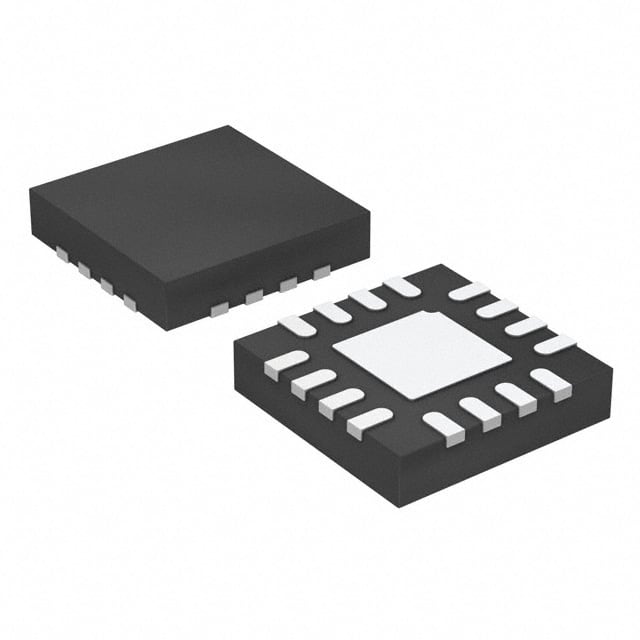TPS60250RTET
Product Overview
Category
The TPS60250RTET belongs to the category of integrated circuits (ICs) and specifically falls under the voltage regulators category.
Use
This IC is primarily used as a boost converter, which means it can step up or increase the input voltage to a higher output voltage level.
Characteristics
- The TPS60250RTET is a highly efficient boost converter with a wide input voltage range.
- It is designed to provide a regulated output voltage even when the input voltage varies.
- This IC offers a high switching frequency, enabling compact designs and minimizing the size of external components.
- It has built-in protection features such as thermal shutdown and overcurrent protection.
Package
The TPS60250RTET is available in a small package known as a Thin SOT-23 (TET) package. This package is suitable for space-constrained applications.
Essence
The essence of the TPS60250RTET lies in its ability to efficiently convert lower input voltages into higher output voltages, making it ideal for various power supply applications.
Packaging/Quantity
The TPS60250RTET is typically sold in reels containing a specific quantity of ICs. The exact quantity may vary depending on the manufacturer and distributor.
Specifications
- Input Voltage Range: 1.8V to 5.5V
- Output Voltage Range: Up to 28V
- Switching Frequency: 1.2MHz
- Efficiency: Up to 90%
- Operating Temperature Range: -40°C to 85°C
- Package Type: Thin SOT-23 (TET)
Detailed Pin Configuration
The TPS60250RTET has the following pin configuration:
- VIN: Input voltage pin
- SW: Switching node pin
- FB: Feedback pin for regulating the output voltage
- GND: Ground pin
- EN: Enable pin for controlling the IC's operation
Functional Features
- Wide input voltage range allows flexibility in power supply design.
- High switching frequency enables the use of smaller external components.
- Built-in protection features ensure safe operation and prevent damage to the IC.
- Efficient boost conversion provides a stable output voltage even with varying input voltages.
Advantages and Disadvantages
Advantages
- High efficiency results in minimal power loss during voltage conversion.
- Compact size and thin package make it suitable for space-constrained applications.
- Wide input voltage range allows compatibility with various power sources.
- Built-in protection features enhance reliability and safety.
Disadvantages
- Limited maximum output voltage compared to some other boost converters.
- May require additional external components for specific applications.
Working Principles
The TPS60250RTET operates as a boost converter by utilizing an internal switch and control circuitry. When the input voltage is applied, the internal switch rapidly turns on and off, creating a high-frequency voltage waveform. This waveform is then filtered and regulated to provide a stable output voltage that is higher than the input voltage.
Detailed Application Field Plans
The TPS60250RTET can be used in various applications, including but not limited to:
- Battery-powered devices: It can efficiently boost the battery voltage to power components requiring higher voltages.
- Portable electronics: Enables the generation of higher voltages for display panels, backlighting, or audio amplifiers.
- IoT devices: Suitable for powering sensors, wireless modules, and microcontrollers in IoT applications.
- Automotive electronics: Can be utilized in automotive systems where a stable and regulated voltage is required.
Detailed and Complete Alternative Models
- TPS61070: Another boost converter IC with similar characteristics and package options.
- LT1308: A high-efficiency boost converter IC with a wide input voltage range.
- MAX1724: Integrated boost converter IC designed for low-power applications.
These alternative models offer similar functionality and can be considered as alternatives to the TPS60250RTET based on specific requirements and design considerations.
Word count: 570 words
Senaraikan 10 soalan dan jawapan biasa yang berkaitan dengan aplikasi TPS60250RTET dalam penyelesaian teknikal
Sure! Here are 10 common questions and answers related to the application of TPS60250RTET in technical solutions:
Q: What is TPS60250RTET? A: TPS60250RTET is a step-up DC-DC converter with an integrated boost switch, designed for low-power applications.
Q: What is the input voltage range of TPS60250RTET? A: The input voltage range of TPS60250RTET is typically between 1.8V and 5.5V.
Q: What is the output voltage range of TPS60250RTET? A: The output voltage range of TPS60250RTET can be adjusted from 2.5V to 5.5V using external resistors.
Q: What is the maximum output current of TPS60250RTET? A: The maximum output current of TPS60250RTET is typically 100mA.
Q: Can TPS60250RTET operate in a wide temperature range? A: Yes, TPS60250RTET is designed to operate in a temperature range of -40°C to +85°C.
Q: Does TPS60250RTET have built-in protection features? A: Yes, TPS60250RTET includes overcurrent protection, thermal shutdown, and undervoltage lockout features.
Q: Is TPS60250RTET suitable for battery-powered applications? A: Yes, TPS60250RTET is well-suited for battery-powered applications due to its low quiescent current and high efficiency.
Q: Can TPS60250RTET be used in portable devices like smartphones or wearables? A: Yes, TPS60250RTET is commonly used in portable devices where efficient power conversion is required.
Q: What type of package does TPS60250RTET come in? A: TPS60250RTET is available in a small 16-pin QFN package, which is suitable for space-constrained applications.
Q: Are there any application notes or reference designs available for TPS60250RTET? A: Yes, Texas Instruments provides application notes and reference designs that can help with the implementation of TPS60250RTET in various technical solutions.
Please note that these answers are general and may vary depending on the specific requirements and use cases. It's always recommended to refer to the datasheet and relevant documentation provided by the manufacturer for accurate information.


